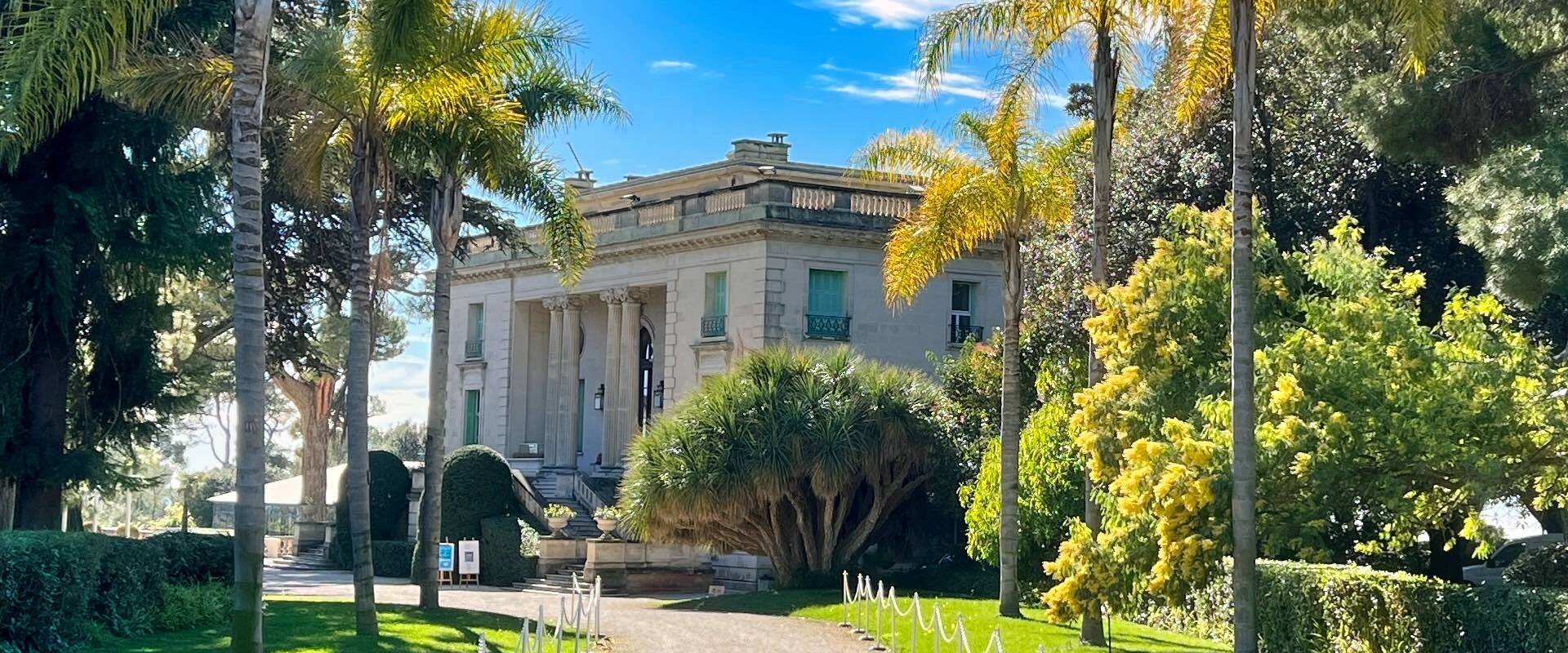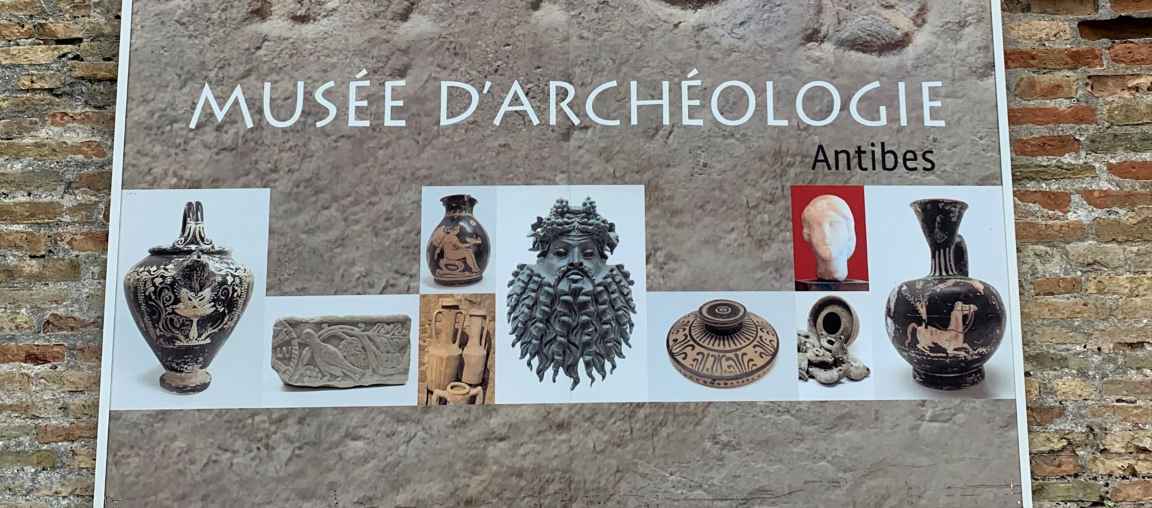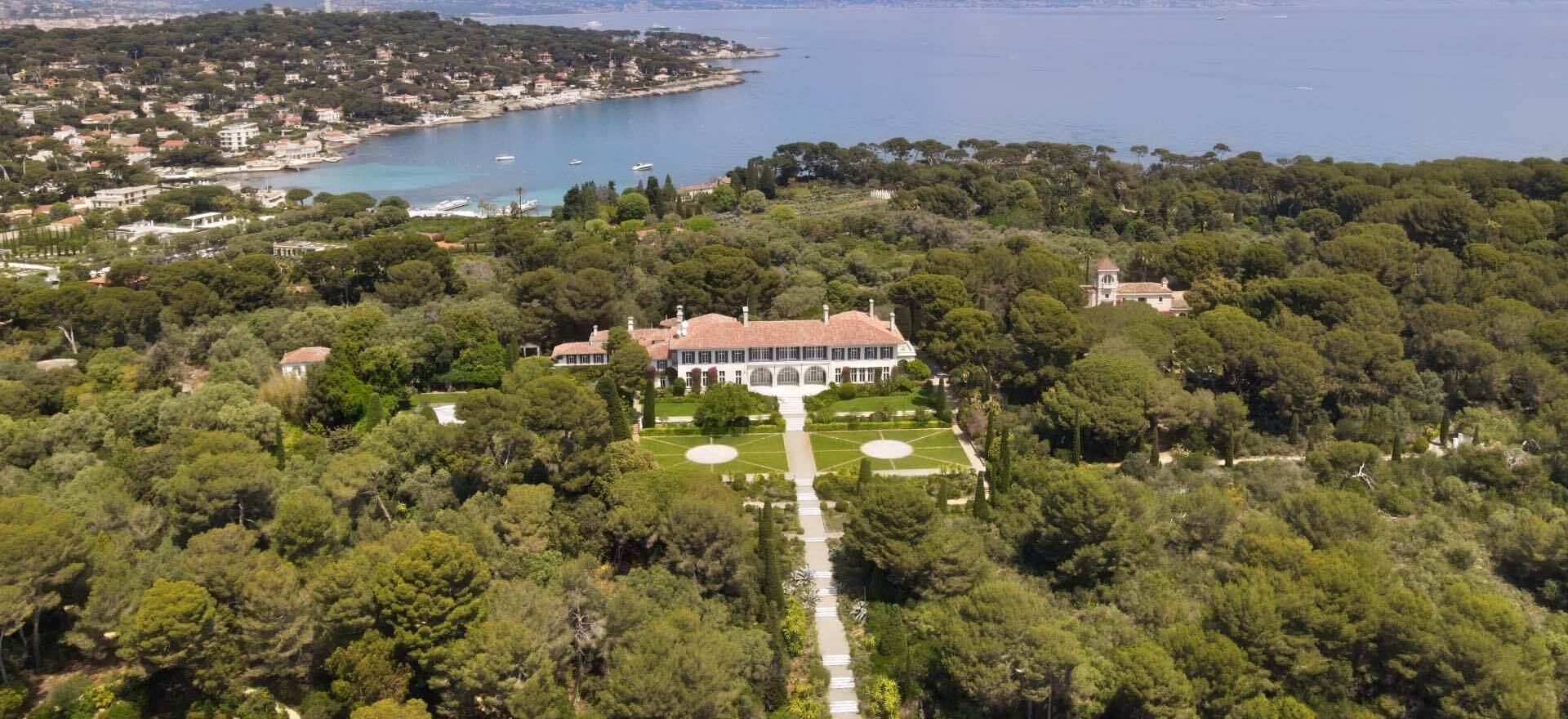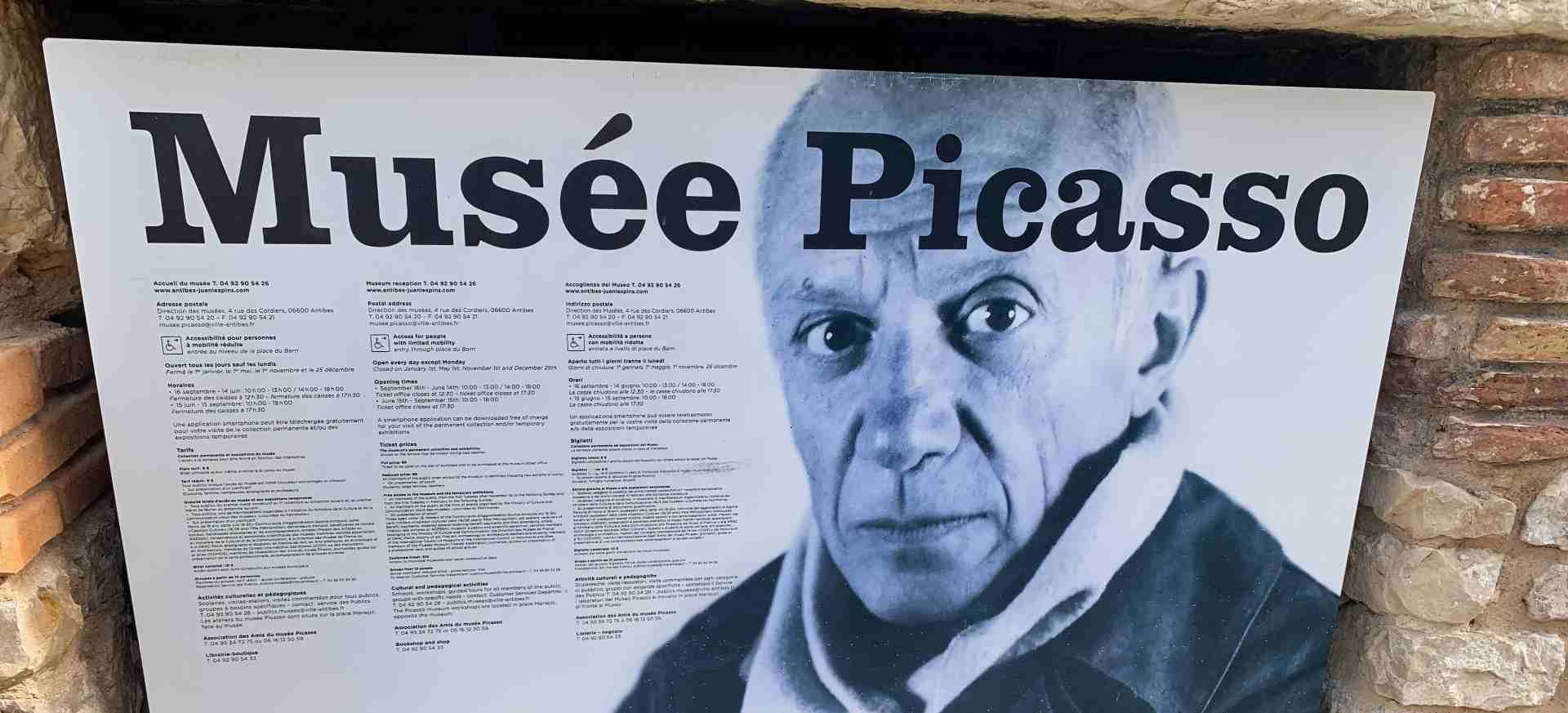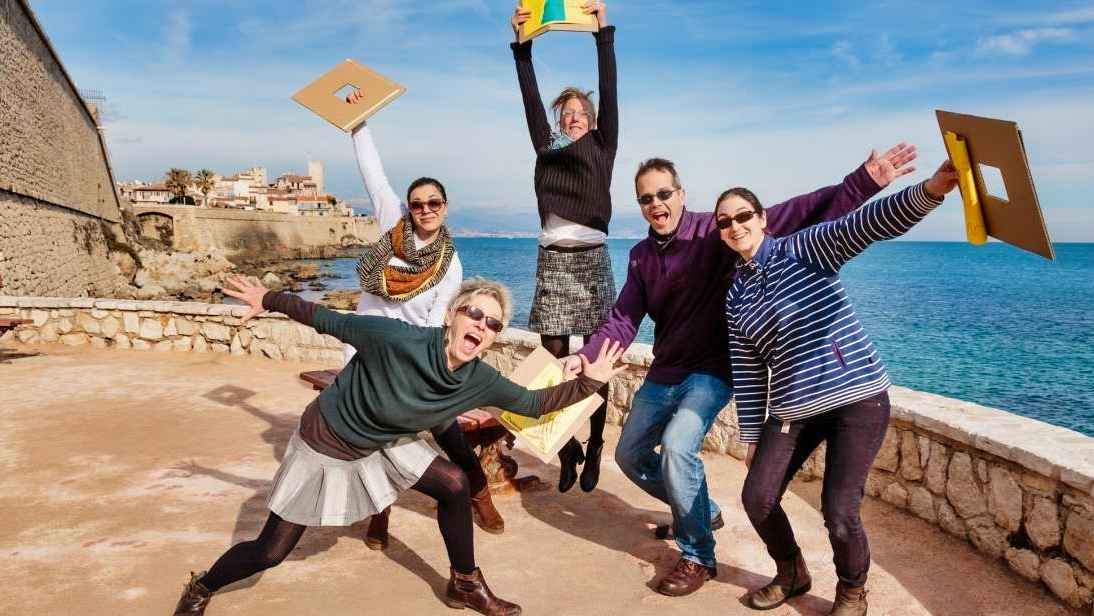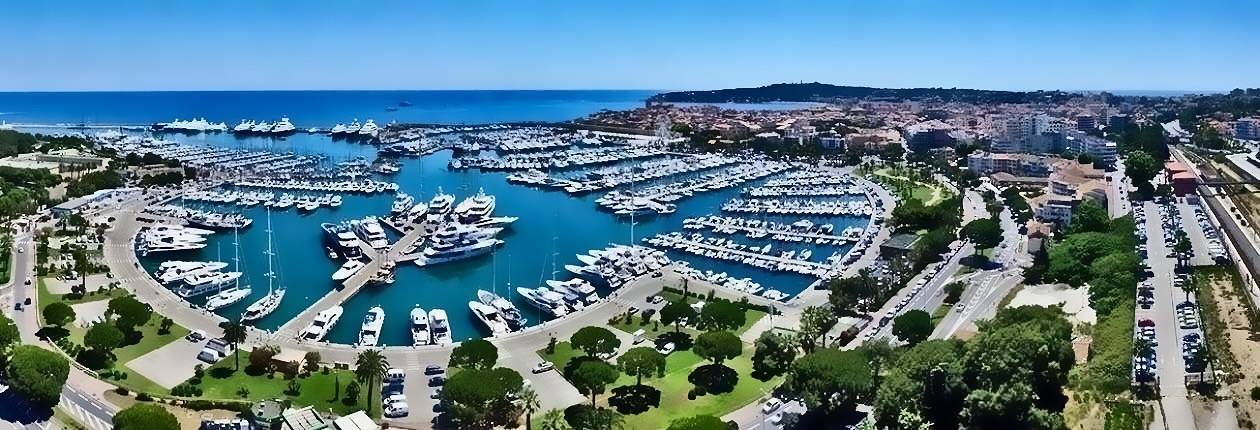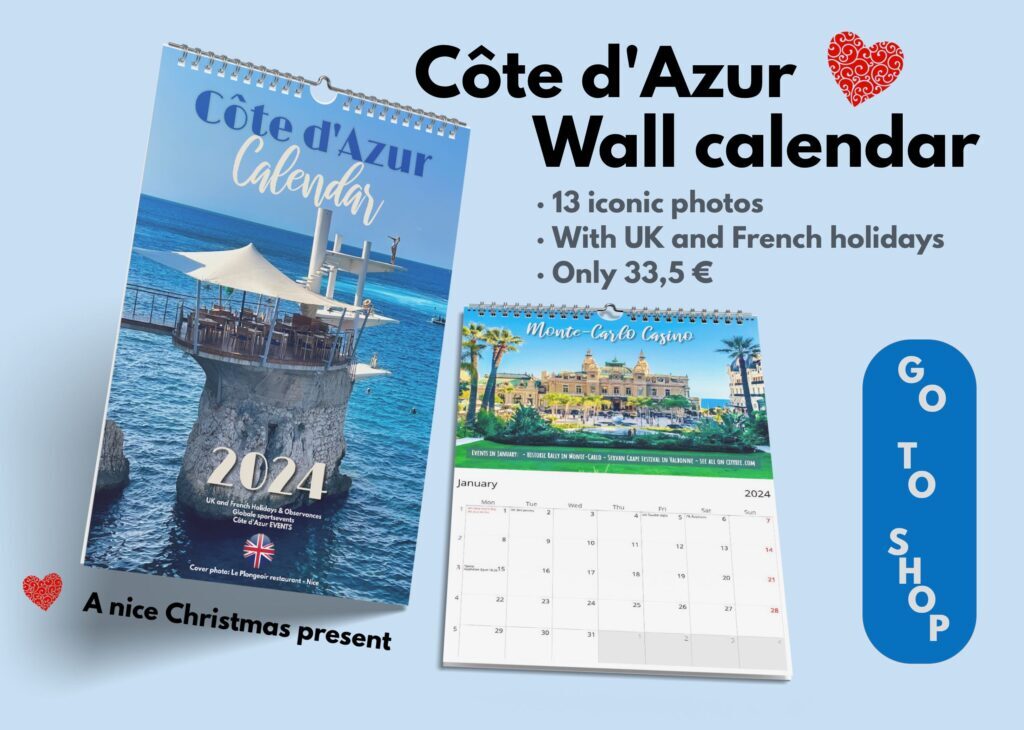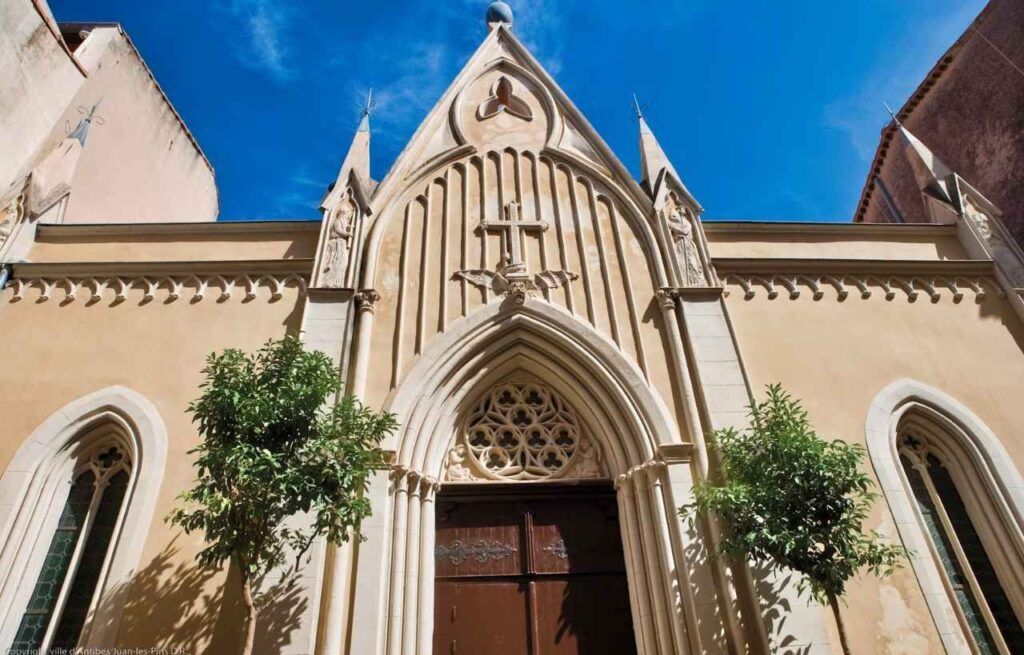
The Saint-Bernardin chapel is today beautifully restored
Chapelle Bernardin is named after the Italian priest Bernardin Albizeschi (1380-1444), who traveled around Italy for 25 years and preached the holy message of Jesus. After his death he was canonized in 1450 by Pope Nicholas V.
The chapel has been listed as a historical monument since 1989 and was completely restored between 1995 and 2011.
The facade facing Rue Rostan is built in neo-gothic style. It is crowned with towers on the sides that support the contours of hooded remorse penitents.
Above the door, Lucifer is represented as a terrifying winged dragon with a long tail and sharp claws. He rules over three worlds: Underground, Earth and Sky. The dragon twists and roars at the foot of the cross, beaten down by saints and protective angels.
Saint-Bernardin’s original side door dates from 1581
The side door on Rue Saint-Bernardin, in solid walnut, is dated March 20, 1581.
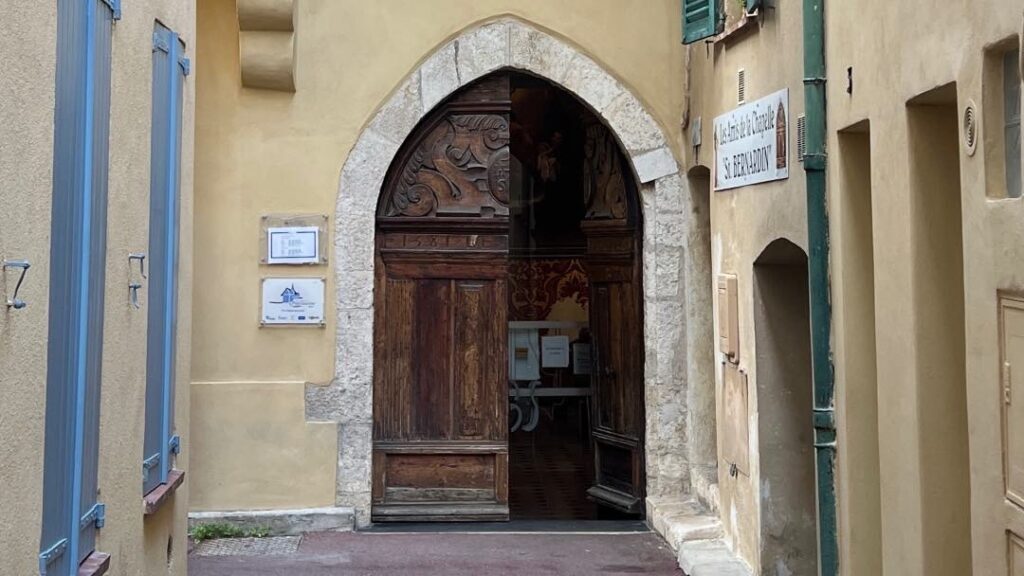
Saint-Bernardin’s beautiful interior
Inside, three statues are represented: Saint Roch, Saint Sébastien and Saint Bernardin de Sienne.
Chapelle Bernardin also contains some absolutely stunning ceiling paintings – trompe l’oeil – depicting the four evangelists as well as the Virgin Mary, Christ and Saint Bernardin:

- Saint Matthew (the angel: it is the origin, therefore the man)
- Saint John (the eagle: his gospel begins with the heavenly mystery)
- Saint Mark (the lion: for he roars in the desert)
- Saint Luke (the bull: it symbolizes the sacrificed priest and the bull by the sacrifice)
- Virgin Mary, Christ and Saint Bernardin in the middle.
On the side of the vaults in blue are two inscriptions in Latin under Christ and the Virgin Mary:
- “ECCE DEUS SALVATOR MEUS” (“Here is God my Savior”).
- “IN ME OMNIS SPES VITAE ET VIRTITIS” (“In me hope all in virtue”).
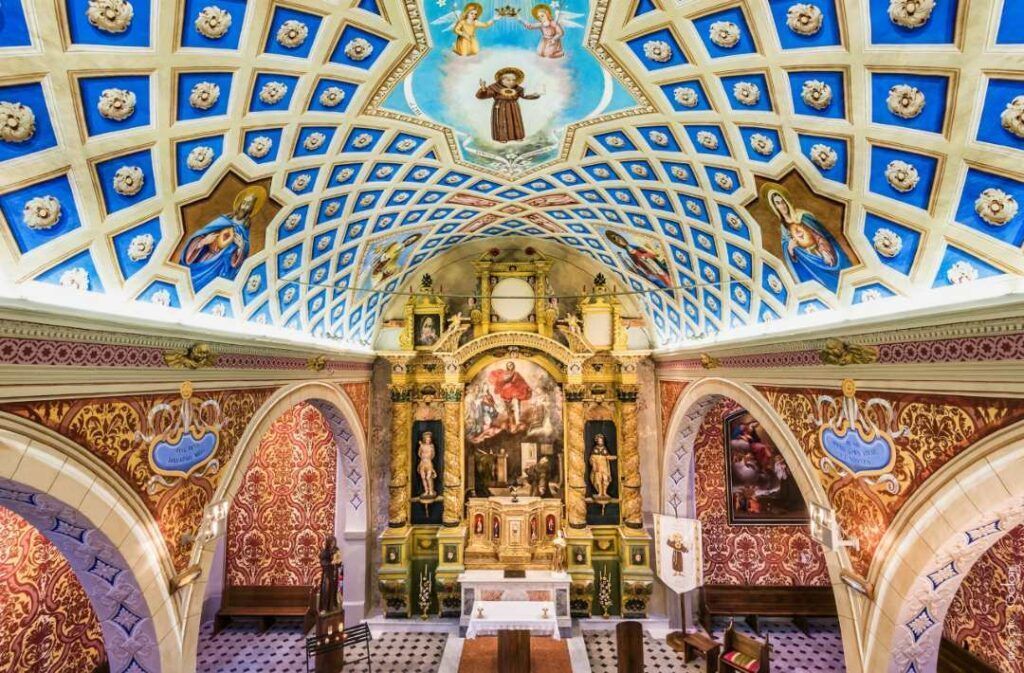
On the ceilings of the side vaults is painted one of the most beautiful starry skies I have ever seen in a chapel – it is an absolutely magical sight.
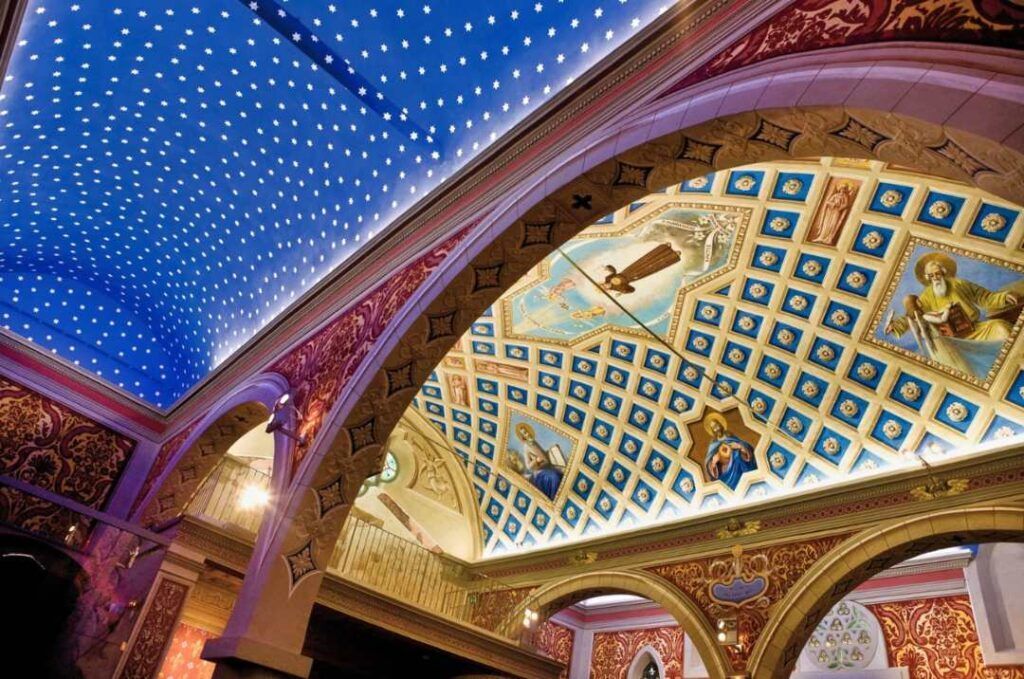
In the vaulted room to the right of the altar hangs a painting by the painter Antoine Aundi, “La descente de la Croix ” (The Descent from the Cross).
The altar is adorned with four twisted gilded wooden columns in baroque style and decorated with Acanthus leaves.
Entrance free.
By Tommy Sverre – 2023
- All
- Art
- Castles and palaces
- Churches & chapels
- Excursions
- Hiking
- Markets
- Monuments
- Museums
- Ports & Islands
- Wash-houses
- Zoos


